OUR NATURE RECOVERY AMBITION UPDATE
January 2025
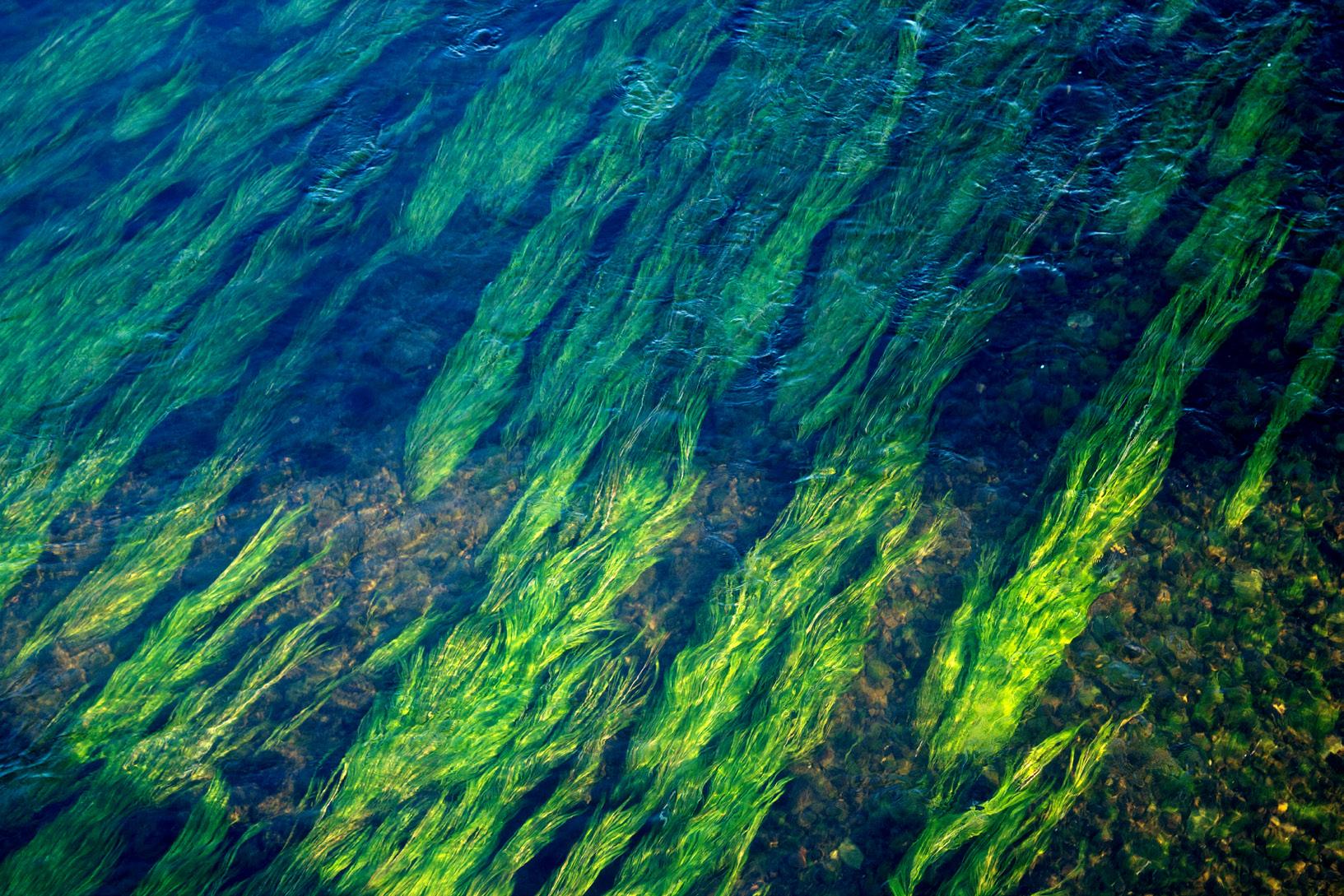
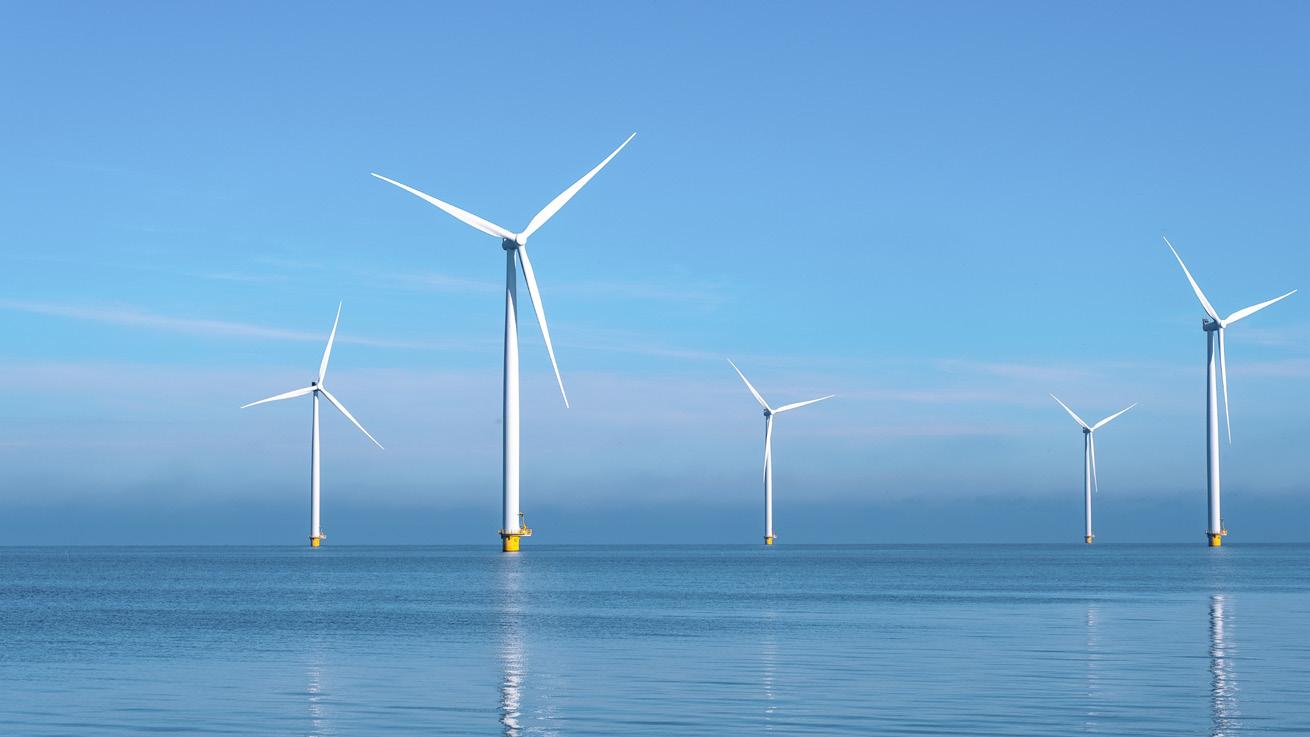

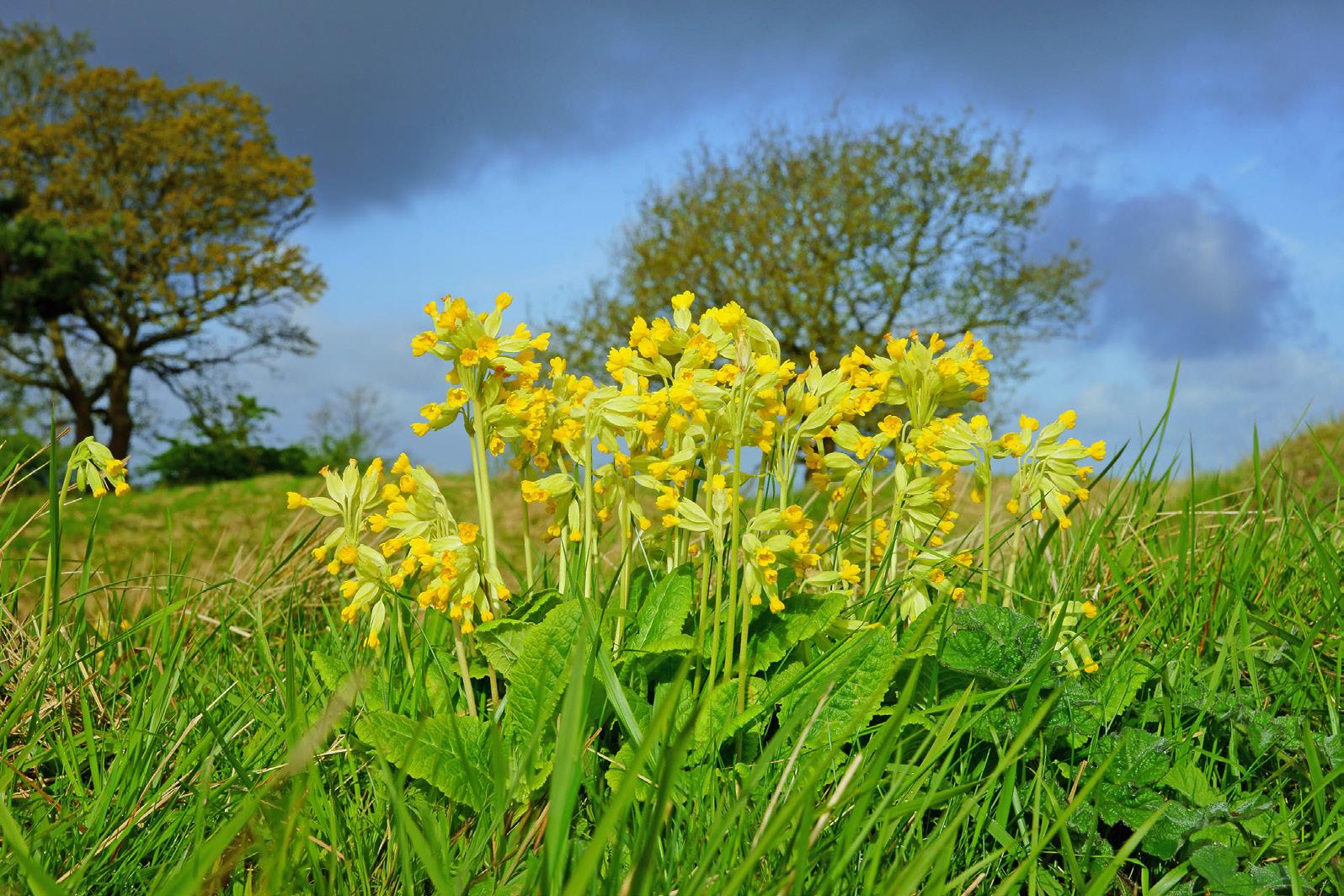

January 2025




PAGE 3
Foreword
PAGE 4
Our Portfolio
PAGE 5
Our Nature Recovery Ambition
PAGE 7
Goal 1: Biodiversity Summary
PAGE 9
Marine and Coastal: Biodiversity Overview and Targets
PAGE 11
Rural: Biodiversity Overview and Targets
PAGES 13
Windsor Estate: Biodiversity Overview and Targets
PAGE 15
Urban and Built: Biodiversity Overview and Targets
PAGE 17
Goal 2: Water Update
PAGE 20
Goal 3: People and Nature Update
PAGE 23
Stakeholders Engaged
PAGE 24
Closing remarks
PAGE 25
Glossary
PAGE 27
Appendix: Biodiversity Targets, Actions and KPIs

We’re at a critical time where humankind and business must reset their relationship with nature to halt biodiversity loss by 2030. As The Crown Estate is the custodian of some of the largest and most diverse, distinct and important holdings on land and sea across England, Wales and Northern Ireland, our impact is significant and so is our responsibility to take a leading role in stewarding the UK’s natural environment and biodiversity.
Our approach to nature recovery 1 must be integral to the UK’s transition to a net zero energy secure future alongside building social and economic resilience. We approach investments and decisions with a view to creating long-term environmental, social and economic impact by assessing them using our Value Creation Framework 2 – this has been enhanced to ensure that nature is a core consideration of how we create value.
We published our Nature Recovery Ambition in October 2024 after a year-long engagement with external stakeholders across England, Wales and Northern Ireland. It outlines our commitments and three interconnected goals focused on increasing biodiversity, addressing the water challenge and enabling people to reconnect with nature.
We’re now moving from ambition to action and accountability with stretching targets and a delivery plan to underpin our commitments.
This update focuses on the targets and actions we will take to deliver on the first of our three nature goals: to deliver a measurable increase in biodiversity for The Crown Estate’s holdings across land and sea by 2030, to support climate adaptation and resilience and the UK’s commitment to protect 30% of land and sea for nature.
New biodiversity targets integrated across our portfolio and areas of influence are detailed in this update and include:
MARINE AND COASTAL: Integrate nature as a priority into the Marine Delivery Routemap3. Identify the most suitable locations for nature recovery, across our marine and coastal portfolio to support accelerated delivery of improvements across marine and coastal habitats by 2030 in close collaboration with others. This includes doubling the area leased to marine and coastal nature recoveryfocused activities by 2030.
RURAL ENVIRONMENT: Repurpose 15% of farmland let on new tenancies in the rural portfolio to nature recovery by 2030 and restore or start creating Habitats of Principal Importance (HoPI) 4 backed by a £20 million Rural
Environment Fund. We will develop shared visions for nature recovery with graziers with common rights and other stakeholders in Wales and Cumbria and deliver Nature Action Plans5 by 2030.
WINDSOR ESTATE: Enhance and expand nature recovery within our Windsor Estate, by increasing the area of HoPI including parkland and heathland, and restore or create 25 waterbodies and wetlands providing wildlife-rich habitats 6 by 2030.
URBAN AND BUILT ENVIRONMENT: Protect and grow nature-rich green and blue spaces across our urban portfolio and set a target to acheive this. Exceed mandatory Biodiversity Net Gain (BNG) requirements and target 15% BNG where we are the developer and can practically achieve this.
At this stage some of our targets intentionally focus on defining our baseline and where our greatest opportunities are for impact. Our next update on performance will be published in our June 2026 annual report. Where appropriate, we intend to consolidate to fewer and more quantified targets as we improve our understanding of impact through data and evidence. Other initial targets focus on how we work with customers and stakeholders, and these may evolve into shared targets as we learn

Dan Labbad Chief Executive Officer
together. This requires that we take an iterative approach where collaboration and data and evidence are key.
Subsequent updates will also provide further detail and targets related to our goals on water and people and nature, as well as refinement of our action plans to further integrate nature recovery, climate adaptation and resilience, and social benefits into all our business activity.
The scale of the challenge and opportunity for nature demands that everyone act together, and we are committed to listening to feedback, collaborating and working in partnership to deliver its protection and recovery at scale.
Our portfolio includes:
~50% of foreshore, Territorial seabed up to including grassland, wetland and peatland.
With our unique remit and diverse portfolio, The Crown Estate has a statutory mandate to create holistic and long-term financial, environmental and social value for our stakeholders, our customers and the nation. This diverse portfolio, spanning a large variety of habitats, means that we have to work in partnership and provides us with the ability to bring together public and private partners, stakeholders and customers to catalyse change. and rights to marine minerals, offshore renewables, carbon capture and gas storage on the continental shelf around England, Wales and Northern Ireland.
75,000 hectares of rural land
12 nautical miles, 22,000 hectares of uplands and commons interests in Cumbria and Wales.
The 6,500 hectare Windsor Estate, of which 80% is subject to environmental, ecological and land use designation.
We provide more detail on our portfolio in Wales in the attached report that aligns with requirements under the Environment (Wales) Act 2016 Section 6: see link. We will continue to report on activities in Wales and Northern Ireland in the relevant sections of our Annual Report. in London’s West End and 15 retail destinations7. Diverse urban portfolio spanning
10 million sq ft
9 million sq ft
We have a national development pipeline with potential to deliver of commercial space, including the science and technology sectors, and
27,000 new homes.
Our approach: Joined-up action across land and at sea to restore nature and create lasting benefits for people, climate and the environment. Our vision: Nature is flourishing and cared for as one of the UK’s most precious assets.
Understand Nature
Identify high quality data to inform decision-making
The goals underpinning this vision and approach are aligned with domestic and global ambitions for nature recovery, helping to halt nature’s decline by 2030 and contributing to nature’s recovery by 2050.
Partner for Nature
Collaborate to accelerate nature recovery at scale
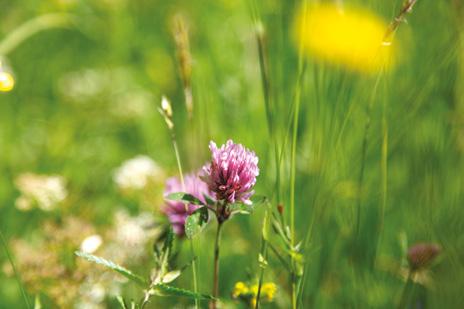
OUR 2030 GOALS
Deliver Increased Biodiversity
Increase social and well-being benefits from nature
Protect and restore freshwater, marine and coastal systems
Design for Nature
Embed nature as a core priority in our management of land and seabed OUR
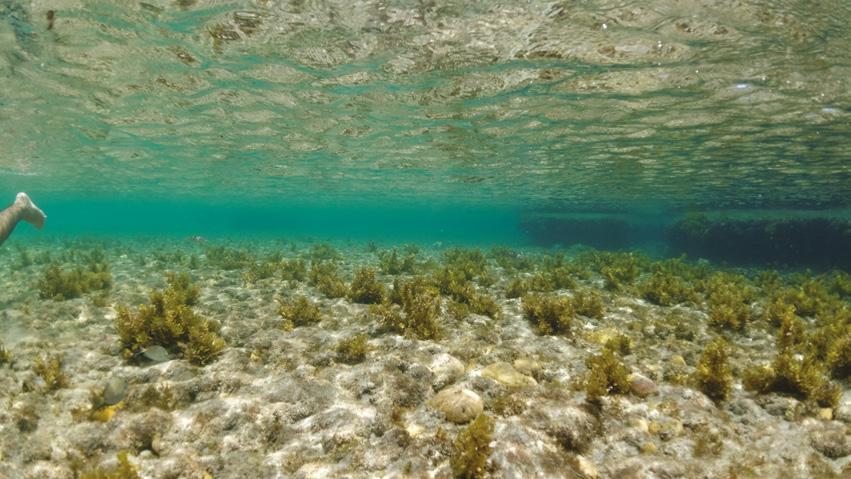
Fund Nature
Unlock capital at scale to protect and restore nature

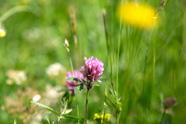
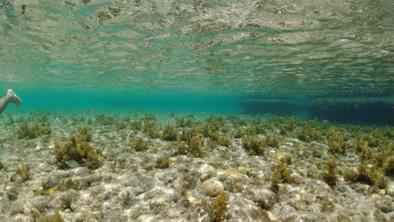

Protect and restore freshwater, marine and coastal systems

Goal 3:
Increase social and well-being benefits from nature
Deliver a measurable increase in biodiversity for The Crown Estate’s holdings across land and sea by 2030, supporting climate adaptation and resilience.
Identify and tackle causes of water degradation and water stress in areas within The Crown Estate’s influence by 2030.
Why?
Changes in land use, such as intensive agriculture and urban development, are causing degradation in the form of habitat loss and depleted soil condition. In parallel, changes such as offshore development and sewage outflows drive deterioration of freshwater, marine and coastal environments in the form of habitat fragmentation and loss.
The Crown Estate has an opportunity to deliver measurable increases in biodiversity across landscape and seascape. This will require the protection and prioritisation of areas for nature recovery. Overall, this will support the nation’s ability to build resilience and adapt to climate change.
The challenge of improving water quality across our rivers, lakes and seas is a key national focus. Chemical run-off from agriculture is a significant cause of pollution, alongside other commercial activities and sewage outflows. Water management is becoming an increasingly important issue due to climate change impacts and escalating demand through increased urban and housing development.
As one of the UK’s largest custodians of national assets, on land and at sea, we can use our influence and customer relationships to support actions to improve water quality and reduce water stress.
Reconnect people with nature, delivering measurable health and well-being benefits by 2030, including community engagement with nature across our projects and developments.
Creating locally accessible blue and green spaces contributes to the health and well-being of communities and provides a range of broader benefits to society and the environment such as improved air quality, temperature regulation, and biodiversity enhancement.
Our holdings offer an opportunity to drive a shift to developing nature projects that engage urban, rural and coastal communities, and in a way that works for both nature and people.
Goal 1:
Deliver a measurable increase in biodiversity for The Crown Estate’s holdings across land and sea by 2030, supporting climate adaptation and resilience.
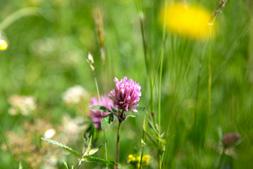
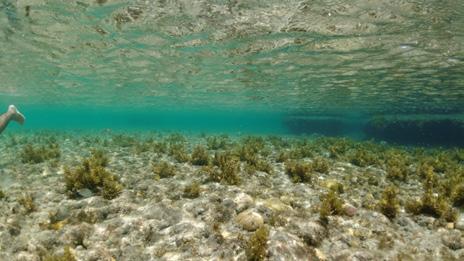

The Crown Estate is custodian of diverse marine, coastal, rural and urban habitats that are home to thousands of species vital for communities and the economy.
Our headline targets are underpinned by supporting targets and activities aligned to our four commitments to understand, design, fund and partner for nature. We have developed targets taking into account global, national and devolved administration goals, policy frameworks and action plans.
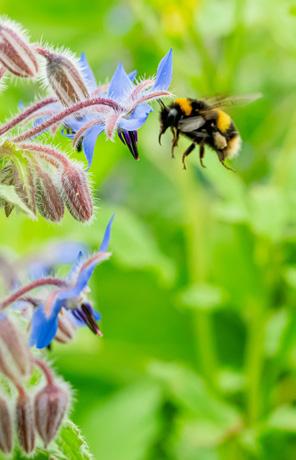
New biodiversity targets integrated across our business are detailed in this update and include:
ENVIRONMENT: Integrate nature as a priority into the Marine Delivery Routemap. Identify the most suitable locations for nature recovery, across our marine and coastal portfolio to support accelerated delivery of improvements across marine and coastal habitats by 2030 in close collaboration with others. This includes doubling the area leased to marine and coastal nature recovery-focused activities by 2030.
Repurpose 15% of farmland let on new tenancies to nature recovery by 2030. Restore or start creating Habitats of Principal Importance (HoPI) and increase the extent by 600ha and plant 1000km of hedgerows by 2035. This will be backed by a £20 million Rural Environment Fund. We will develop shared visions for nature recovery with graziers with common rights and other stakeholders in Wales and Cumbria and deliver Nature Action Plans by 2030.
WINDSOR ESTATE: Enhance and expand nature recovery by increasing the area of HoPI including parkland and heathland by 5ha, and restore or create 25 waterbodies and wetlands providing wildlife-rich habitats by 2030.
Protect and grow nature-rich green and blue spaces across our urban portfolio and set a target to achieve this once we have established a complete baseline. Exceed mandatory Biodiversity Net Gain (BNG) requirements and target 15% BNG where we are the developer and can practically achieve this.
We will expand our understanding through high quality data and evidence, setting a best available baseline by 2026. Putting data at the heart of our decision-making is critical to how we design and embed nature in our management of land and seabed, including the development of nature principles for all new tenders and leases to incentivise delivery of outcomes for nature. We recognise that achieving nature recovery at scale requires unlocking of capital and innovative financing mechanisms. At the heart of catalysing action for nature recovery will be partnerships with our customers and other landowners and organisations.
In the next section, we provide more details on our headline targets for each of the four environments.
In the next section, we share more detail on our approach to increasing biodiversity across marine and coastal, rural and Windsor, urban and built environments. Additional detail on supporting targets and KPIs is available in the appendix including targets on species. We will actively review how our nature recovery approach is benefiting species over time and where we need to develop new targets and KPIs.
Our marine portfolio covers the territorial seabed out to 12 nautical miles and ~50% of foreshore, and rights to marine minerals, offshore renewables, carbon capture and gas storage on the continental shelf around England, Wales and Northern Ireland.
From: Ever-increasing demands on the seabed, without a coordinated approach to address the decline in nature alongside the need for infrastructure, industry and new technologies.
To: Creating a long-term vision for competing demands on the seabed, whilst protecting nature and improving ecosystem resilience in the coastal and marine environment.

The nation’s seabed is critical to addressing our climate challenges, net zero and supporting growth and regeneration – with around 50% of the nation’s electricity to come from offshore wind and the potential to store millions of tonnes of carbon under the seabed. This increasing demand for seabed and new infrastructure risks damaging marine habitats and species, so we need to plan energy and nature together, reduce pressures and proactively restore and enhance nature.
Our vision is to create the most sustainable and attractive marine economy and environment in the world, so for nature we need to be as ambitious as we are for energy and growth. We are working in partnership with a wide range of organisations to enable this. Our Marine Delivery Routemap, based on a shared evidence base, will offer a strategy on how to best use the seabed to allow space for nature to thrive and inform decisions on future leasing.
1. Integrate nature as a priority into the Marine Delivery Routemap, drawing on our Whole of Seabed 8 evidence base to:
● Identify the most suitable locations for nature recovery interventions in partnership with stakeholders by 2028.
● Double the area leased to marine and coastal nature recoveryfocused activities by 2030, measured against a 2025 baseline.
2. Increase understanding of the state of protected and vulnerable habitats, both inside and outside of Marine Protected Areas9, within our jurisdiction, working with others to support improvement by 2030.
3. Accelerate private sector investment in nature and support the development of innovative, highintegrity finance mechanisms.

The Crown Estate has worked with over 200 cross-sector experts to develop ‘HighIntegrity Marine Natural Capital Markets in the UK – A Roadmap for Action’. This presents a pathway to securing new sources of finance to protect, restore and sustainably manage marine and coastal ecosystems.
1. Integrate nature as a priority into the Marine Delivery Routemap, drawing on our Whole of Seabed evidence base to:
a) Identify the most suitable locations for nature recovery interventions in partnership with stakeholders by 2028.
b) Double the area leased to marine and coastal nature recovery-focused activities by 2030, measured against a 2025 baseline.
Given our role in leasing activity on the seabed, including leasing for nature, we are focused on how we can build a pipeline of nature improvement projects with partners. Given the complexity of the marine environment, we have a critical part to play, working with other stakeholders to accelerate progress.
● Work with other stakeholders to identify areas, both within and outside of MPAs, where nature recovery interventions in coastal and marine environments will have the most impact.
● Publish this as a strategic opportunity map to make it accessible to a range of potential partners.
● Prioritise areas for nature recovery and increase the pipeline of new nature projects on our foreshore and seabed.
● Develop and apply nature principles for all new tenders and leases to incentivise wider delivery of nature outcomes in future tenders and leasing activity.
● To track progress over time, publish the area leased for nature recovery-focused activities in ha/annum and the cumulative total area.
● Publish a strategic opportunity map to enable a stronger pipeline of nature recovery activities.
2. Increase understanding of the state of protected and vulnerable habitats, both inside and outside of Marine Protected Areas (MPAs), within our jurisdiction, working with others to support improvement by 2030.
We can play a key collaborative role by working with those who are responsible for the overall management of MPAs, as well as other organisations, to accelerate nature recovery and contribute towards 30 by 30 targets10
● Develop and publish our ‘best available nature baseline’ annually from 2026, including data on habitats and mobile species from our Whole of Seabed evidence base, contributing towards Global Biodiversity Framework11 Target 2112.
● Work collaboratively with statutory and non-statutory partners to develop Nature Action Plans that will shape our contribution to driving improvements in biodiversity.
● Measure the number of Nature Action Plans (which can apply to locations within and outside of MPAs) in each phase of production (development, draft, published).
● Publish updates on initiatives to address key evidence gaps on the state of protected and vulnerable habitats.
3. Accelerate private sector investment in nature and support the development of innovative, high-integrity finance mechanisms.
Unlocking high-integrity marine natural capital markets13 is key to tackling the significant gap in funding for nature recovery in the UK. This target aligns with the Global Biodiversity Framework targets, specifically Target 19 14 .
● The Crown Estate has already been focused on convening different organisations to build frameworks and a roadmap to support the development of high integrity marine natural capital markets in the UK.
● Measure funding allocated by The Crown Estate for nature-related projects and activities.
● Measure our funding and co-funding (public, philanthropic, private sources) for nature-related projects and activities.
● With partners, report on progress against the High Integrity Marine Natural Capital Markets Roadmap.
Our rural portfolio includes 75,000 hectares of land across England and Wales, of which 22,000 hectares are uplands and common interests in Cumbria and Wales.
From: A traditional manager of farmland, capturing limited future value potential.
To: An exemplar of large-scale sustainable and diversified agricultural and environmental best practice.
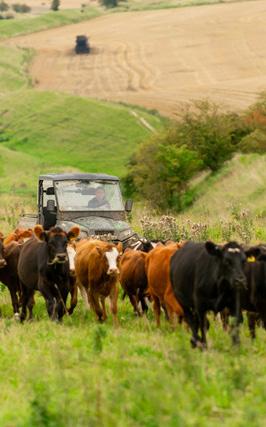
Food production and nature recovery are both urgent priorities that need to be achieved through effective stewardship of the land. Changes in land use and intensification of farming are substantial contributors to nature loss and depleted soil conditions.
We are supporting our farmers to adopt regenerative agriculture practices, drive nature recovery, and diversify land-use and income streams. We are changing our tenancy agreements to reflect this shared endeavour. The Crown Estate is aiming to be an exemplar of productive and sustainable agricultural best practice, and of new tenancy models to enable this on a large scale.
1. Repurpose 15% of farmland let on new tenancies* in the rural portfolio to nature recovery by 2030.
2. Restore or start creating Habitats of Principal Importance and increase the extent by 600ha, including 400ha** of woodland by 2030, and plant 500km of new ‘nature-friendly’ hedgerow by 2030 and 1000km by 2035, measured from a 2022 baseline. Review and engage where possible with targeted local nature recovery partnerships to identify the most suitable parts of our rural portfolio to focus habitat creation by 2030.
3. Work with graziers with common rights, local communities, statutory agencies and other stakeholders, to agree a shared nature recovery vision for selected commons in Wales and Cumbria, by identifying key nature recovery opportunities on common land within our ownership, and begin implementing action plans by 2030.
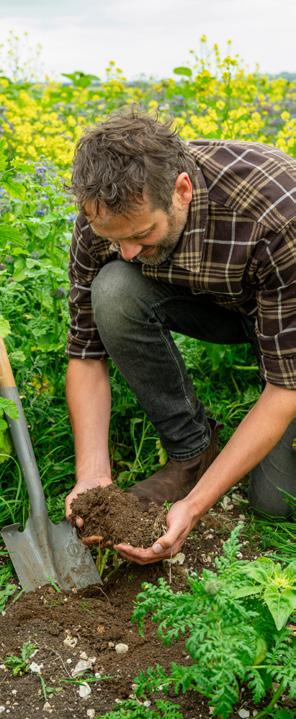
1. Repurpose 15% of farmland let on new tenancies in the rural portfolio to nature recovery by 2030.
Nature recovery on farmland is the meaningful and permanent creation of habitats around the productive farm. As part of our shift to regenerative agriculture to create more resilient natural assets, we have set this target after engagement with our farmers and other organisations.
With all of our tenant farmers, we will continue to:
● Develop Nature Action Plans to identify nature recovery opportunities on individual farms that improve connectivity in the landscape and are compatible with Local Nature Recovery Strategies and other nature recovery partnerships.
● Engage with the transition to more regenerative agriculture.
● Progressively roll out Environmental Farm Business Tenancies (EFBTs).
● Accelerate nature recovery by working with farmers to optimise use of The Crown Estate's £20 million Rural Environment Fund.
2. Restore or start creating Habitats of Principal Importance (HoPI) and increase the extent by 600ha, including 400ha of woodland, by 2030, and plant 500km of new ‘nature-friendly’ hedgerow by 2030 and 1000km by 2035, measured from a 2022 baseline. Review and engage where possible with targeted local nature recovery partnerships to identify the most suitable parts of our rural portfolio to focus habitat creation by 2030.
MEASURING SUCCESS
● Measure the percentage of repurposed farmland area where nature recovery interventions have taken place, and where a Nature Action Plan has been implemented.
Within and across our landholdings we have responsibility for important natural habitats. These are often shared with other landowners.
● This target sets minimum quantities for the highest quality type of habitats in the portfolio; HoPIs. This ensures that the 15% of repurposed farmland involves creation of high value as well as commonplace habitats.
● We will increase positive management of our rural Sites of Special Scientific Interest and HoPI, in England and Wales. We will produce Nature Action Plans by 2028 and improve their condition and implement actions by 2030.
● We will work with the following to increase the extent of HoPIs in England and Wales:
● Other farmers, landowners, and Local Nature Recovery Networks to strategically prioritise.
● Natural England and Natural Resources Wales, as we are dependent on them for up-to-date assessments of conditions.
3. Work with graziers with common rights, local communities, statutory agencies and other stakeholders to agree a shared nature recovery vision for selected commons in Wales and Cumbria by identifying key nature recovery opportunities on common land within our ownership, and begin implementing action plans by 2030.
MEASURING SUCCESS
● We will track how much HOPI is either restored or created by tracking area broken down by habitat type.
● Number of Local Nature Recovery Strategies (LNRS) or local nature recovery partnerships reviewed or consulted to agree most strategic locations for habitat creation.
● Track km’s of ‘nature-friendly’ hedgerow planted by 2030.
Upland commons across Wales and Cumbria feature the majority of our HoPIs. Given the importance of this land for nature, local communities and livelihoods, there is an opportunity to work together to develop future visions and action plans.
MEASURING SUCCESS
● Develop a partnership approach with graziers with common rights, local communities and other stakeholders to select commons where we identify nature recovery opportunities.
● Commit to shaping a collective vision and action plan for nature recovery opportunities to improve the resilience of the land and the livelihoods of graziers with common rights.
● Measure the area of land in nature recovery commons partnership management in Wales and Cumbria.
Our Windsor Estate covers 6,500 hectares and aspires to be an exemplar and test bed for land management and conservation practices.
From: A historic landscape where many important habitats and features have been protected.
To: A thriving Estate which is actively managed to enhance habitats and species and achieve nature recovery at landscape scale.

Its 1,000-year history and long-term stewardship by The Crown Estate has made Windsor an internationally important site for biodiversity conservation. Significant parts of The Windsor Estate are designated as Sites of Special Scientific Interest (SSSI) 15, Special Areas of Conservation (SAC)16 and Special Protection Areas (SPA) 17 . It is the top site in Britain’s Index of Ecological Continuity for saproxylic beetles. A diversity of habitats are being enhanced, and our ten-year landscape restoration programme is putting new trees, hedges, and woodlands into the Windsor landscape.
The Crown Estate has partnered with Microsoft UK to build the Conservation Quest featuring Windsor Great Park. This sustainability education initiative is aimed at inspiring and engaging primary and secondary school students to grow their knowledge and skills of climate change and the natural environment.
1. Enhance and expand Windsor’s areas of Habitats of Principal Importance by 5ha by 2030 whilst maintaining favourable condition of the Special Protection Areas (SPA), Special Areas of Conservation (SAC), and Sites of Special Scientific Interest (SSSIs), where appropriate environmentally.
2. Maintain the population of ancient and veteran trees on the Windsor Estate and ensure appropriate establishment of 1,000 successor trees and a minimum of 20km of new hedgerows 18 by 2030, through completion of the landscape replanting project.
3. Restore or create 25 waterbodies and/or wetlands providing wildliferich habitats by 2030.
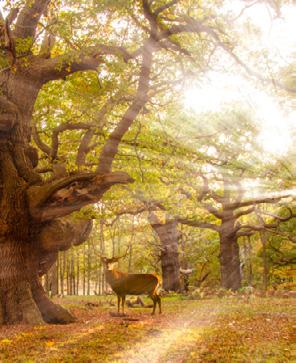
Conservation activity at Windsor has increased with the first phases of the 10-year landscape recovery programme, the arrival of British White cattle for conservation grazing, the restoration of lowland heathland and the creation of new ponds. Monitoring confirms that the habitats support a diversity of rare and threatened species.
1. Enhance and expand Windsor’s areas of Habitats of Principal Importance by 5ha by 2030 whilst maintaining favourable condition of the Special Protection Areas (SPA), Special Areas of Conservation (SAC), and Sites of Special Scientific Interest (SSSIs), where appropriate environmentally.
In Windsor we are responsible for a unique series of landscapes and areas of great importance to nature. We see this responsibility as an opportunity to exemplify best practice in nature recovery.
● Windsor is directly managed by The Crown Estate and is our exemplar estate for nature recovery.
● We have a distinct responsibility for unique HoPI and are committed to ensuring we work to enhance and expand these areas. We have a good understanding of their current condition.
● This includes active management of trees, woodland, grassland, heathland and ponds, and control of invasive species to enable the important communities of fungi, insects, birds and other species to thrive.
● This will require partnership working with Natural England who monitor their condition.
2. Maintain the population of ancient and veteran trees on the Windsor Estate and ensure appropriate establishment of 1000 successor trees and a minimum of 20km of new hedgerows by 2030, through completion of the landscape replanting project.
MEASURING SUCCESS
● Measure and track delivery progress on 5ha of HoPIs.
● Monitor habitats as we seek to maintain and enhance conditions since the last assessments by Natural England.
Windsor Great Park has many irreplaceable habitats, including trees that take hundreds of years to acquire their ecological condition. Planting new trees and the “Windsor” hedgerows 14 will further enhance the landscape and increase its climate resilience.
Measures will be taken to:
● Maintain the ancient and veteran trees in good health.
● Establish future veterans by appropriate planting and protection of successor trees. This will include a high proportion of open grown Pedunculate Oak, and other locally native trees of high associated wildlife value.
3. Restore or create 25 waterbodies and/or wetlands providing wildlife-rich habitat by 2030.
MEASURING SUCCESS
● Measure the number of open grown trees planted and length of hedgerow.
● Measure the number of ancient and veteran trees with management, implemented by 2030.
Waterbodies (e.g. ponds, watercourses) and wetlands enhance biodiversity and we are committed to contributing to the UK’s Environment Improvement Plan wildlife-rich habitat target and future wetland inventory.
● The estate has an inventory of ponds and watercourses, many of which had become derelict and overgrown or infilled. The programme of pond restoration will be continued and opportunities to create new ponds will also be taken to increase this habitat resource across the estate.
● The ponds and wetlands at Swinley Forest, Crowthorne Woods and Buttersteep Forest are key to the special interest of the SSSI sites.
MEASURING SUCCESS
● Measure the number of ponds and wetland habitats restored or created by 2030.
A diverse nationwide real estate and urban portfolio, including Regent Street and St James’s in London, retail parks and shopping centres across the country and a significant development pipeline, with the potential to deliver some 9m sq ft of commercial space and more than 27,000 homes.
From: Urban and built environments, with limited access to nature-rich green and blue spaces.
To: Integrating nature into built and urban developments, improving adaptability and resilience to climate change, well-being and economic value.
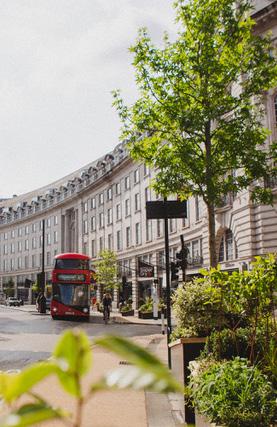
Supporting nature in towns and cities is a key focus for The Crown Estate. Many urban areas are biodiversity poor and development can exacerbate habitat fragmentation and biodiversity loss. The challenge is to meet the national need for regeneration and home building, alongside enabling net zero, nature recovery and improving people’s connection to nature. Increasing nature and biodiversity is essential for the sustainability of urban and built environments, enabling our resilience to climate change, supporting people’s health and well-being and creating opportunities for local economies.
1. Increase understanding of the state of our green and blue spaces and identify nature recovery opportunities across the entire urban portfolio by 2026. These spaces will promote ecological connectivity, seek to benefit protected and notable species, and be aligned with Local Nature Recovery Strategy priorities, where possible.
2. Publish a target and metrics by the end of 2026 to protect and grow nature-rich green and blue spaces by increasing their area and improving their condition.
We have been working with The Wildlife Trusts on introducing keystone species, including the reintroduction of beavers to Northamptonshire for the first time in centuries in 2024, at Rushden Lakes which is next to one of our major retail destinations.
3. Exceed mandatory Biodiversity Net Gain (BNG) requirements by targeting 15% BNG on all greenfield and brownfield development sites where we are the developer whilst following the biodiversity mitigation hierarchies and CIEEM 19 BNG good practice principles.
We are already delivering increased nature-based interventions across our urban development pipeline whilst completing this target work.

We are working with Westminster City Council to transform Regent Street, Piccadilly Circus and Haymarket, with an ambition to enhance nature, well-being and climate change resilience and create a more accessible and inclusive West End.
1. Increase understanding of the state of our green and blue spaces and identify nature recovery opportunities across the urban portfolio by 2026. These spaces will promote ecological connectivity, seek to benefit protected and notable species, and be aligned with Local Nature Recovery Strategy priorities, where possible.
Across our urban portfolio we have a variety of green and blue space from small areas spread across our London estate to the important wetland habitats next to our Rushden Lakes Retail Centre. These spaces support biodiversity and ecological connectivity. We acknowledge their co-benefits for people*, however, this target focuses on the biodiversity value they provide. Societal benefits are addressed separately.
MEASURING SUCCESS
2. Publish a target and metrics by the end of 2026 to protect and grow naturerich green and blue spaces by increasing their area and improving their condition.
3. Exceed mandatory Biodiversity Net Gain (BNG) requirements by targeting 15% BNG on all greenfield and brownfield development sites where we are the developer whilst following the biodiversity mitigation hierarchies and CIEEM BNG good practice principles.
● Assess the condition of green and blue space across our urban portfolio.
● Review our development pipeline to assess new green and blue space that we will be delivering in the years ahead.
Base our approach on:
● Identifying opportunities through Nature Action Plans which will extend to our developer role in greenfield and brownfield development sites.
● Alignment with climate change adaptation and urban water management priorities.
● Track the number of urban assets with a green and blue space map/inventory covering habitat type, extent and condition.
● Track the number of urban assets / master development sites with a Nature Action Plan, including green and blue spaces, habitats and wildlife.
We are committed to expanding the amount and increasing the ecological value of green and blue space in our urban portfolio to increase biodiversity and also provide cobenefits for people and climate. We need to complete our baselining before we can set a quantitative target.
We are taking action now across our urban assets and development projects, and we are maximising nature recovery where feasible.
MEASURING SUCCESS
● Whilst all relevant projects will accord with BNG requirements, we acknowledge that within some environments ecological value may be better represented through the application of alternative metrics and tools. We will develop bespoke metrics to meaningfully assess ecological value, taking account of key existing approaches such as Urban Greening Factor, biodiversity unit per hectare score and Biodiversity Net Gain. These will reflect the true impact of the green and blue space, including connectivity and provision for people and species.
● We will work with our existing partnerships, such as Wild West End 20 , with other estates and Westminster City Council, and the Wildlife Trust BCN in Rushden Lakes to maximise the quality and extent of green and blue spaces. This includes monitoring and encouraging the reintroduction of species.
● Track the increase in the area and condition of green and blue spaces using the targets and metrics we publish by the end 2026.
Meeting the need for new housing is a critical social need and we have the opportunity to develop greenfield and brownfield development sites in a way that also meets and, where possible exceeds, BNG requirements. % uplifts in BNG score should provide meaningful uplifts in habitat area or condition, particularly on our greenfield sites.
MEASURING SUCCESS:
For every greenfield and brownfield development site where we are the developer we will:
● Maximise green and blue spaces in line with CIEEM BNG good practice principles, and with our people and nature goal* to provide access to this space.
● Once these nature-based assets are created, co-develop long-term stewardship models for their management, exploring opportunities for innovation in securing sustainable income streams, minimising management costs and ensuring communities have a long-term key role.
● Track the BNG score cumulatively across the portfolio.
● Track the provision of high distinctiveness habitat, for each site and % BNG uplift achieved, in order to monitor the quality of ecological habitat being provided.

Protect and restore freshwater, marine and coastal systems. Identify and tackle causes of water degradation and water stress in areas within The Crown Estate’s influence by 2030.
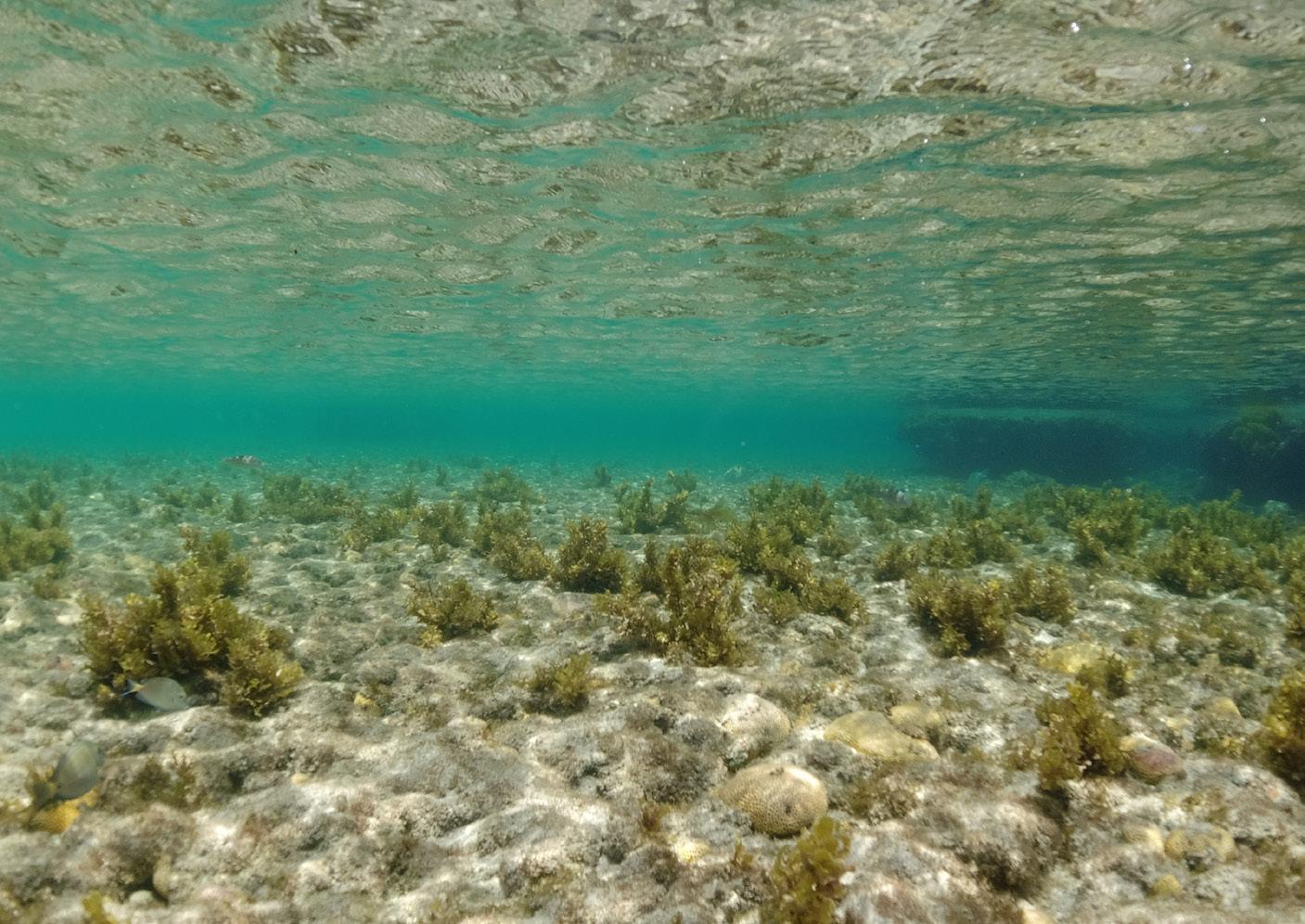

Clean and abundant water is essential to life, but this is under threat. It supports biodiversity, our social well-being and the economy. Changes in land use, depletion of nature and climate change are impacting our already strained water system. Our changing climate exacerbates water variability, from drought to flooding risks for urban, rural and coastal communities, and pollution of our water systems has become a national issue. In addition, water scarcity is increasingly acting as a barrier to the development of housing to meet social needs. We understand this will only be tackled if as a country we reimagine the value of water, restore water systems to health and manage water consumption differently in the context of climate change.
The importance of the challenge has been highlighted by the recent work of the Economics of Water Commission which found that water is often taken for granted as an abundant gift from nature and it emphasises that water should be viewed as both very local and entirely global because it is ultimately one interconnected system. Their report, The Economics of Water: Valuing the Hydrological Cycle as a Global Common Good, builds on the Stern Review of 2006 and the Dasgupta Review of 2021 and strengthens the evidence base for taking an integrated approach to the fundamentally entwined issues of climate, biodiversity and water.
The Crown Estate has an imperative to understand its impacts and role, from its operations to leasing for commercial activities on land and seabed. We have the potential to influence in helping tackle water quality and variability issues such as scarcity and flooding, effecting change in freshwater, marine and coastal systems.
Commercial activities on the foreshore and on the sea have the potential to impact water quality. Clean water is essential for marine biodiversity to thrive and the benefits this brings for the environment, health and well-being and the economy.
RURAL ENVIRONMENT:
Agricultural practices can impact water quality from runoff, while water variability accentuated by climate
change increases the risk of flooding and stress. Water is critical for farming and food production, and the transition to a regenerative approach.
In the urban context our existing assets and new developments all impact demand for water and also need to have built-in resilience to the impacts of flooding and water variability.
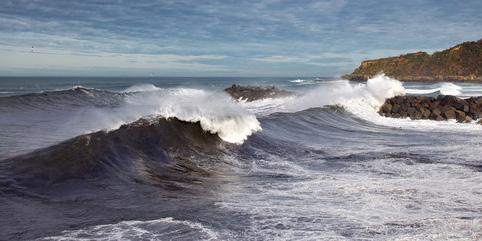
Our overall ambition is to incorporate best practice in land and seabed management across our portfolio in a way that minimises negative impacts on water and advances the resilience of the wider water system. We recognise the importance of a catchment-based approach to water systems, and understand that our land both contributes to and depends on the health of the wider catchments in which it is located. Although we have been working in some catchment partnerships, we have identified an opportunity to work proactively at a greater scale to support systems change, working with our customers, convening industry, challenging norms and influencing change.
We will drive understanding, insight, research, innovation and action driving best practice, seeking to minimise negative impact, and improve resilience of our water systems from ‘source to sea’. Riparian zones 21 – the transitional areas between bodies of water, such as rivers, lakes and streams – are also a particular focus for us. Increasing blue spaces and water quality can positively impact biodiversity and climate resilience. It will take many stakeholders to play a different role, including us to tackle this multi-faceted problem and develop holistic solutions.
Our immediate focus will be on understanding the underlying causes of water degradation and variability, and the role we can play in developing action plans on water.
● Identifying priority water catchment partnerships, and if appropriate, providing support for resourcing, research and delivery informed by our holdings and place-based approach.
● Continuing to incorporate water considerations within our Value Creation Framework to ensure we are maximising the impact.
● Reviewing our current and future impacts on water and how we can improve performance, drivng compliance by incentivising customers and updating leasing models.
● Working with our customers and partners to improve the accuracy and availability of water quality data for the public.
● Support and amplify marine and coastal water quality projects in 2025-26.
● Building on our water pilots in Romney Marsh, Casthorpe and Redbournbury, we will encourage river restoration and catchmentfriendly farming.
● Integrating water ambitions into our Environmental Farming Business Tenancies.
● Developing our water action plan for Windsor Great Park, working with local catchment partnerships and other organisations.
● Through our asset and property management activities, develop a water meter implementation programme to enable us to set a baseline for improvements in water usage.
● Across the urban development portfolio, assess how we can implement water-efficient designs, landscaping and sustainable drainage systems.
● Where applicable across our development portfolio, work with local water companies to understand water availability and incorporate sustainable water management strategies in new developments.
The first phase of work will focus on deepening our knowledge and insight, as the basis for developing and integrating targets, KPIs and actions into our plans across our business. We will engage with our stakeholders and customers, enabling the development of shared targets where intervention is needed in partnership to address catchment and system change. We will focus on creating an integrated approach so that actions to tackle water degradation and variability also, supporting climate adaptation and resilience for communities, and increase biodiversity.

Increase social and well-being benefits from nature. Reconnect people with nature, delivering measurable health and well-being benefits by 2030, including community engagement with nature across our projects and developments.



The UK is one of the most naturedepleted countries in the world and people are less connected to nature compared to most other countries.* Fewer people are gaining the health and well-being benefits of nature since the pandemic.**
Access to green spaces is unequal, with lower socio-economic and ethnic groups having fewer opportunities to benefit from nature. At the same time, climate change impacts mean green space in urban areas is vital to reduce the “heat island” effect and more generally to mitigate the extremes of weather. Both heat and flooding create direct threats to people’s health and livelihoods. Engaging people in nature is also critical to creating public support for environmental action, as civic society will play an important role in meeting the UK’s net zero and nature targets. This will require a broad effort from policy makers, business and communities to improve outcomes for nature, to help people thrive with the opportunities that it brings at all levels of the economy and society.
The Crown Estate is custodian to diverse holdings, covering a variety of land types and uses, with customers and partners in many sectors, spanning cities, towns and communities where nature is part of peoples’ lives and livelihoods.
ENVIRONMENT: Human activities, increasing pressures from commercial activities and a changing climate are impacting these natural environments, driving habitat loss and reducing accessibility. Thousands of people, especially coastal communities, depend on the marine environment for their livelihoods and draw cultural and health benefits from being in these spaces.
RURAL ENVIRONMENT: Changes in land use, such as intensive agriculture and development, are causing degradation in the form of habitat loss and depleted soil condition. Rural communities depend on nature every day, for their leisure and tourism with the well-being benefits this brings, for work and for the sustainability of local economies.
URBAN AND BUILT ENVIRONMENT: Development can cause habitat loss and fragmentation, resulting in a loss of connection for communities. At the same time, the way that we can transform urban and built environments with green and blue spaces can contribute to regeneration and create opportunities for people to thrive. There is a strong evidence base for the benefits of nature in the built environment including addressing air quality and improving health and well-being.
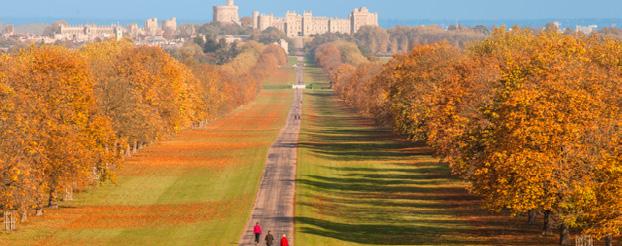
We have an opportunity to drive a more coordinated approach to building people’s connection with nature in our places, as well as embedding it as a way of doing business across our operations, supply chains and within communities. Working between the public and the private sector, we can play an important role in engaging business and civil society in planning for nature in a systemic way to create more sustainable places and communities, improving local economies and opportunities. We can help gather data and evidence, design solutions that bring benefits for nature, climate and people, as well as convene and partner with others. We will seek to maximise health and well-being benefits from nature. Given our profile and the value of our destinations, we can create engaging and educational experiences with nature, from Windsor Great Park, to Regent Street and our other places across the UK.
In 2025 our immediate focus will be on understanding how we can deepen our contribution in three specific ways to reconnecting people with nature.
Creating locally accessible blue and green spaces contributes to the health and well-being of communities and provides a range of broader benefits to society and the environment such as improved air quality, temperature regulation, and biodiversity enhancement. We will identify the opportunities to create more equitable access to green and blue space through our urban developments and will set a target for achieving this in line with best practice.
Promoting the value of nature and conservation, as well as the wellbeing benefits, using our reach with customers, suppliers, communities and with partners. Through existing partnerships with The Wildlife Trusts we are already playing a role in educating children and adults about nature and have also used our innovative work with Microsoft’s Minecraft to enable stronger engagement with nature. We will review how we can use our assets and partnerships to enable greater educational impacts.
Taking an inclusive approach to connecting people with nature, including understanding the barriers faced by both people from lower socio-economic and diverse ethnic groups. Already through Windsor Great Park and Rushden Lakes we are connecting over 6m people every year with nature. We will establish a baseline of who is accessing nature through our current assets and look across our portfolio at the opportunities to widen people’s connection with nature.
Our first phase will focus on developing insights and building knowledge to develop and integrate targets, KPIs and actions into our plans. We will continue to use our existing touchpoints such as Windsor Great Park to enable people to enjoy the benefits of nature, as well as working in partnership with others to expand our reach and impact, as we have done with our partnership with Microsoft and with the Wildlife Trusts. At the same time, we will put the principles of listening and engaging with stakeholders at the heart of how we seek to take a more inclusive approach to building people’s connection to nature.
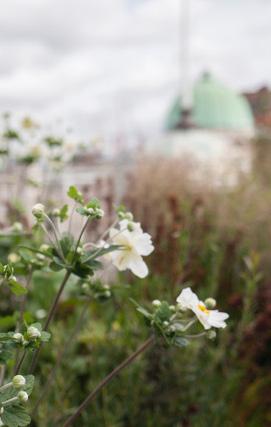
Nature recovery is emerging; unlike net zero, the taxonomy, standards and frameworks for nature recovery are in development. Ongoing engagement with a wide range of experts and organisations is necessary to shape and refine our approach.
Nature recovery is complex and doesn’t organise by the shape of our holdings. Bringing in outside perspectives helps us to understand how our activities fit within a wider context, including ecosystems and economic systems.
Our engagement over the last 12 months includes:
● Interviews with over 30 experts in England, Wales and Northern Ireland.
● A workshop in January with 38 stakeholders to develop focus areas.
● An interactive webinar in July to test our draft approach, commitments and goals.
● Input from environmental NGOs, public bodies, SMEs, corporates, academics and trade unions.
● Advice from The Cambridge Institute for Sustainability Leadership (CISL), Pollination and Wonderoom.

With thanks to the following organisations for their valuable time and insights: Agri-Food and Biosciences Institute (Northern Ireland), Afonydd Cymru, Arup, Business for Nature, Cambridge Greater Shared Planning, CISL, Wales Coasts and Seas Partnership (CaSP Cymru), Defra, Duchy of Cornwall, Dŵr Cymru Welsh Water, Environment Agency, Farmers’ Union of Wales, Forager, Forestry Commission, Office for the Future Generations Commissioner for Wales, Greater London Authority, Greater Cambridge Shared Planning, Green Alliance, Joint Nature Conservation Committee, Knepp Estate, London National Park City, Marine Management Organisation, National Trust, Natural England, Natural History Museum, NFU, NFU Cymru, North Northamptonshire Council, Natural Resources Wales, Pala, Pollination, Restore Nature, Rewilding Britain, Royal Parks, The Royal Society for the Protection of Birds, RSPB Cymru, Trees for Cities, UKGBC, Ulster Wildlife, Vertical Meadow, The Wildlife Trusts, Wildlife Trusts Wales, Welsh Government, Welsh Local Government Association, Wildlife and Countryside Link, Wonderoom, World Resources Institute, WWF, WWF Cymru, WWT, Zoological Society of London

Anna Swaithes Chief Sustainability Officer
We believe that our vision of nature flourishing and being cared for as one of society’s most precious assets is one that we share with many. Nature and the services it provides are intrinsic to a functioning society and economy.
Biodiversity, water and people’s relationship with nature are all interconnected. From the availability and quality of water to support biodiversity; to the role of biodiversity, freshwater, marine and coastal systems in climate adaptation and resilience; to their foundations for social and economic needs, including agriculture and the provision of food to our health and our well-being.
The problems and solutions are also interconnected; all land types and
uses, sectors, supply chains, cities, towns and communities are inherently interdependent and part of nature.
In October 2024, we set out our initial Ambition for Nature Recovery after a year’s intensive engagement with stakeholders. This was at the same time as COP16, where we heard a resounding call for action before 2030, with a fundamental need for a reset in our relationship with nature.
Our partnership approach is rooted in working with others to take joined-up action and enable systemic change, from building our Marine Delivery Routemap to our work with farmers on mapping out how we enable a switch to regenerative farming
through our new Environmental Farm Business Tenancies.
We are making progress; however, we must go much further to embed nature recovery across our whole business through our people, partners, customers, and communities. This means finding the common ground where there are competing demands and delivering shared benefits for the environment, for communities and the economy.
We will continue to evolve our approach to nature recovery as we deepen our insights, and will work to integrate our actions with those that we take to contribute to net zero, to climate resilience, to inclusive

communities and economic growth.
This is a fast-moving, complex space and we’re working at pace to deliver progress while adapting to guidance and best practice as our understanding evolves. There will be complexity and barriers along the way. We must be open about challenges and what we learn in the process; engaging, listening and working with others to identify solutions that will have the greatest impact.
This January, our update has focused on targets and actions for biodiversity. In Spring 2025, we intend to share our Marine Delivery Routemap – Nature Publication –which will further set out how we can enable nature recovery alongside a thriving marine economy in England, Wales and Northern Ireland.
In 2026 we intend to share more details on our plans to identify and tackle causes of water degradation and water stress, and to support greater social and well-being benefits from nature as part of an integrated approach.
Many nature experts and organisations have given their time and insights as part of this process. I want to thank them for their support. We welcome feedback on our nature ambition and plans at: naturerecovery@thecrownestate.co.uk
1. Nature recovery: Reversing the current decline of biodiversity so that ecosystem restoration is underway and species are increasing in abundance and fewer are threatened with extinction. (Source: Natural England, Joint Nature Conservation Committee (JNCC), Natural Resources Wales, NatureScot and NIEA 2021).
2. Value Creation Framework (VCF): The VCF sets out our approach to how The Crown Estate will deliver value across our four strategic objectives, in line with our purpose. It is supported by a suite of documents and decision-making tools which explain to everyone in the business the expectations on how they should consider sustainability (net zero and energy security, nature recovery, and inclusive communities) and responsible financial returns in all activity.
3. Marine Delivery Routemap: The Marine Delivery Routemap is a collaborative initiative with our partners and stakeholders to develop a long-term strategy for the marine space. Underpinned by The Crown Estate’s Whole of Seabed evidence base, it
will help coordinate action across sectors to deliver on net zero and nature policies, build a thriving marine economy, and capture onshore benefits.
4. Habitats of Principal Importance (HoPIs): HoPI are habitats that are considered to be the most important for wildlife conservation in the UK (Source: Department for Environment, Food and Rural Affairs and Natural England).
5. Nature Action Plans: The Crown Estate is developing Nature Action Plans across our portfolio to support delivery against our nature targets. These will articulate the actions we will be taking, alongside others, in different geographies to progress towards our Nature Ambition. We recognise that whilst nature recovery is a global challenge, delivery of outcomes will be locally specific. Each Plan will therefore capture the unique context in which action is being taken forward, and reflect the relevant delivery framework as appropriate. Core to the development of this approach is working in partnership with our customers and wider stakeholders. For example our Nature Action Plans in Rural will be developed with
6. Wildlife-rich habitats: These habitats are natural or semi-natural areas that are of high quality and can support the flora and fauna that typically live there. They can also include other habitats that are important for the recovery of threatened species. (Source: Environmental Targets England, Fens for the future glossary).
7. Retail destinations: Our retail destinations include retail parks, shopping parks, and shopping centres.
8. Whole of Seabed: The Whole of Seabed Programme is an ongoing, iterative process of data collection, spatial analysis and stakeholder engagement. It aims to provide a highly sophisticated understanding of how the UK might utilise its marine resources to 2050.
9.Marine Protected Area (MPA): Marine Protected Areas are areas of sea, seabed or foreshore protected under other laws such as Special Areas of Conservation, Special Protection Areas, Marine Conservation Zones and Ramsar Sites 22 .
10. 30 by 30 / GBF Target 3: The UN Decade on Ecosystem Restoration (20212030) and Target 3 of the CBD GBF that “by 2030, at least 30% of areas of degraded terrestrial, inland water, coastal and marine ecosystems are under effective restoration”. Full target definition: Ensure and enable that by 2030 at least 30% of terrestrial and inland water areas, and of marine and coastal areas, especially areas of particular importance for biodiversity and ecosystem functions and services, are effectively conserved and managed through ecologically representative, wellconnected and equitably governed systems of protected areas and other effective areabased conservation measures, recognising indigenous and traditional territories, where applicable, and integrated into wider landscapes, seascapes and the ocean, while ensuring that any sustainable use, where appropriate in such areas, is fully consistent with conservation outcomes, recognising and respecting the rights of indigenous peoples and local communities, including over their traditional territories.

11. Global Biodiversity Framework (GBF):
The United Nations Convention on Biological Diversity (CBD) released the Global Biodiversity Framework (GBF) at COP15 following a four-year consultation and negotiation process. This historic framework, which supports the achievement of the Sustainable Development Goals and builds on the Convention’s previous Strategic Plans, sets out an ambitious pathway to reach the global vision of a world living in harmony with nature by 2050. Among the Framework’s key elements are four goals for 2050 and 23 targets for 2030.
12. GBF Target 21: Target 21 of the Kunming-Montreal Global Biodiversity Framework (GBF) aims to ensure that relevant biodiversity data, information, and knowledge are accessible to decisionmakers, practitioners, and the public. Full target definition: Ensure that the best available data, information and knowledge are accessible to decision makers, practitioners and the public to guide effective and equitable governance, integrated and participatory management of biodiversity, and to strengthen
communication, awareness-raising, education, monitoring, research and knowledge management and, also in this context, traditional knowledge, innovations, practices and technologies of indigenous peoples and local communities should only be accessed with their free, prior and informed consent, in accordance with national legislation.
13. High-integrity natural capital markets: High-integrity means real measurable value is delivered for people and nature. Highintegrity natural capital markets ensure the value generated by ecosystems is properly captured and understood, so that funding can flow towards their restoration and protection and benefit is delivered for local communities. According to the CBD, high-integrity markets ensure transparency, accountability, and the inclusion of social and environmental safeguards, which are crucial for sustainable development.
14. GBF Target 19: GBF 19 will substantially and progressively increase the level of financial resources from all sources, in an effective, timely and easily accessible manner, including domestic, international, public and private resources, in accordance with Article 20 of the Convention, to
15. A Site of Special Scientific Interest (SSSI): SSSI are a conservation designation in England or Wales designed to protect areas of land or water that are considered particularly valuable for their wildlife, geology or landform features. In Northern Ireland, these are referred to as Areas of Special Scientific Interest (ASSIs).
16. Special Areas of Conservation (SACs): SAC have been chosen to make a significant contribution to conserving habitats and wildlife species that live there, named in the EC Habitats Directive.
17. Special Protection Areas (SPA): SPA are areas that have been designated specifically to conserve wild birds that are listed as rare and vulnerable in the Birds Directive. They also include sites that migratory birds use as stop-off points on their journeys across the planet.
18. Windsor hedgerows: These hedgerows are planted as a wide (2m +) double row of mixed native shrubs (e.g. hawthorn, hazel, dog rose, crab apple, spindle) suited to the local soils, with native tree saplings (oak, lime, field maple, hornbeam) planted at widely spaced intervals between the rows. Once established the hedges will form wide
19. CIEEM: Chartered Institute of Ecology and Environmental Management
20. Wild West End: A green initiative to transform the heart of London, in partnership with other estates and Westminster City Council.
21. Riparian zones: Riparian zones are the transitional areas between bodies of water, such as rivers, lakes and streams, and the land around them. Streambanks, riverbanks, and floodplains are examples of riparian areas. Their soils and vegetation are shaped by the presence of water, accumulating sediment, and storing water. They connect terrestrial and aquatic ecosystems and are essential for their health.
22. Ramsar Sites: Ramsar sites are wetlands of international importance. They are designated under the Ramsar Convention, an intergovernmental treaty that aims to stop the loss of wetlands.

1. Integrate nature as a priority in our Marine Delivery Routemap, drawing on our Whole of Seabed evidence base, to:
a) Identify the most suitable locations for nature recovery interventions in partnership with stakeholders by 2028.
b) Double the area leased to marine and coastal nature recovery-focused activities by 2030, measured against a 2025 baseline.
2. Increase understanding of the state of protected and vulnerable habitats, both inside and outside of Marine Protected Areas (MPAs), within our jurisdiction, working with others to support improvement by 2030.
● Publish a nature recovery opportunity map.
● Area leased for nature recovery-focused activities in ha/annum, and cumulative total area dedicated to recovery, published annually.
1. Develop and publish our ‘best available nature baseline’ annually from 2026, with evidence on habitats and mobile species from our Whole of Seabed approach.
● Publish a list of nature-related datasets that The Crown Estate will collate and make available on the Whole of Seabed platform.
● Publish a summary of initiatives underway to address key evidence.
2. Continue to support effective initiatives that provide benefit for impacted, threatened or notable species in the marine and coastal environment.
3. Accelerate private sector investment in nature and support the development of innovative, high-integrity finance mechanisms.
● Number of Nature Action Plans for Marine Protected Areas (MPAs) in each phase of production (development, draft, published).
● Number of Nature Action Plans outside of MPAs in each phase of production (development, draft, published).
● Funding allocated by The Crown Estate for nature-related projects and activities.
● Co-funding brought in by The Crown Estate nature-related projects and activities (public, philanthropic, private sources).
● With partners, report on progression against the High Integrity Marine Natural Capital Markets Roadmap.
3. Develop and apply nature principles for all new tenders and leases to incentivise delivery of outcomes for nature across all sectors in the marine and coastal environment.
● Number of initiatives supported and species targeted.
● Relative contribution of supported initiatives to improved connectivity and ecosystem functionality. Exact measure to be agreed.
● Number of new tender activities and lease agreements with nature principles applied.
4. Build collaborative partnerships to catalyse action for nature recovery.
● N umber and type of partnerships.
● Number of research projects commissioned or supported.
● Distribution of The Crown Estate partnerships (where these are geographically specific).
1. Repurpose 15% of farmland let on new tenancies* in the rural portfolio to nature recovery by 2030.
* New tenancies refers to Environmental Farm Business Tenancies for a term of 15 years which we aim to cover 30% of our farmland by 2030.
2. Restore or start creating Habitats of Principal Importance (HoPI) and increase the extent by 600ha, including 400ha** of woodland, by 2030, and plant 500km of new ‘nature-friendly’ hedgerow by 2030 and 1000km by 2035, measured from a 2022 baseline. Review and engage where possible with targeted local nature recovery partnerships to identify the most suitable parts of our rural portfolio to focus habitat creation by 2030.
**We are increasing our area of woodland and tree cover from a baseline of approximately 7%. This will contribute to the Government target of increasing woodland cover in England to 16.5% by 2050.
3. Working with graziers with common rights, local communities, statutory agencies and other stakeholders, we will agree a shared nature recovery vision for selected commons in Wales and Cumbria by identifying key nature recovery opportunities on common land within our ownership and begin implementing action plans by 2030.
● Percentage of farmland area on which nature recovery has been initiated.
● Number and percentage of holdings where Nature Action Plans have been implemented.
1. Increase positive management of Rural Sites of Special Scientific Interest (SSSI) and Habitats of Principal Importance, in England and Wales. Produce Nature Action Plans by 2028 to improve their condition and implement actions by 2030.
● Number, area and percentage (by number and area) of portfolio SSSI units that are in each condition category.
● Area and percentage of Habitats of Principal Importance (outside of SSSI) covered by implemented Nature Action Plans.
● Number of Local Nature Recovery Strategies (LNRS) or local nature recovery partnerships reviewed or consulted to agree most strategic locations for habitat creation.
● Area of Habitats of Principal Importance created (broken down by habitat type).
● Length of hedgerow planted by 2030.
● Area of land in nature recovery commons partnership management in Wales and Cumbria.
2. Convert all existing Farm Business Tenancies (where appropriate) to environmental Farm Business Tenancies by 2030 and provide our farmers with measurement tools to track and deliver measurable improvements.
3. Work with farmers to optimise use of The Crown Estate's £20 million Rural Environment Fund to accelerate nature recovery projects.
4. Build collaborative partnerships to catalyse action for nature recovery.
● Number of Nature Action Plans in each stage (development, draft, published, implemented) per annum.
● Number and area of eFBTs, as a percentage of all farm tenancies.
● Identification and piloting of a measurement tool.
● Financial expenditure on farms from Rural Environmental Fund.
● Number of and area of eFBTs.
● Number of research projects commissioned or supported.
HEADLINE TARGET KPI
1. Enhance and expand Windsor’s areas of Habitats of Principal Importance (HoPI) by 5ha by 2030 whilst maintaining favourable condition of the SPA, SAC and SSSI’s, where appropriate environmentally.
● Area and percentage of Windsor SPA, SAC, SSSI that are in each condition category.
● 5ha of additional HoPI restored or created by 2030 (broken down by habitat type).
SUPPORTING TARGET KPI
1. Develop a species metric for selected species populations (e.g. farmland bird index, butterfly count, etc.) and undertake a pilot species baselining exercise on the Windsor Estate by 2026.
2. Maintain the population of ancient and veteran trees on the Windsor Estate and ensure appropriate establishment of 1000 successor trees and a minimum of 20km of new hedgerows by 2030, through completion of the landscape replanting project.
● Number of parkland trees planted by 2030.
● Length of hedgerow planted by 2030.
● Number of ancient and veteran tree management plans created, and number implemented by 2030.
2. For the Windsor Estate, reduce the extent and impacts of invasive non-native species (INNS) over 25ha of Habitats of Principal Importance by 2030.
● Species baselining exercise at Windsor is complete by December 2026, and informs future species monitoring and reporting plans.
● Area of INNS controlled.
3. Restore or create 25 waterbodies and/ or wetlands providing wildlife-rich habitat by 2030.
● Number of waterbodies (e.g. ponds, watercourses) restored/created.
● Number of wetlands restored/created by 2030.
1. Increase understanding of the state of our green and blue spaces and identify nature recovery opportunities across the entire urban portfolio by 2026. These spaces will promote ecological connectivity, seek to benefit protected and notable species, and be aligned with Local Nature Recovery Strategy priorities, where possible. This understanding work needs to be completed in order to set a robust target for growth in our next target.
2. Publish a target and metrics by the end of 2026 to protect and grow nature-rich green and blue spaces by increasing their area and improving their condition. This target and metric will go beyond Biodiversity Net Gain requirements. It will exclude greenfield and brownfield development sites, which are covered by target 3.
3. Exceed mandatory Biodiversity Net Gain (BNG) requirements by targeting 15% BNG on all greenfield and brownfield development sites where we are the developer whilst following the biodiversity mitigation hierarchies and CIEEM BNG good practice principles.
● Number of urban assets with a green and blue space map/inventory covering habitat type, extent and condition.
● Number of urban assets/master development sites with a Nature Action Plan, including green and blue spaces, and habitats and wildlife.
SUPPORTING TARGET KPI
1. Build collaborative partnerships to catalyse action for nature recovery in the urban and built environment.
● Develop a metric to measure green and blue space for urban assets.
● Publish quantitative targets for increasing green and blue space cover, condition and connectivity for urban assets.
● Number and type of partnerships.
● Number of research projects commissioned or supported.
● Distribution of The Crown Estate partnerships (where these are geographically specific).
URBAN AND BUILT ENVIRONMENT: ACTIONS
We assessed that further detail required under the urban nature recovery approach is better articulated as actions.
These actions are:
● London: Retrofit swift/house sparrow boxes/invertebrate hotels into existing properties.
● Nationally: Incorporate habitats and habitat features for local priority species when designing retrofit or new developments.
● BNG score for each site and % uplift achieved.
● Cumulative BNG score across / cumulative % achieved.
● Area of high distinctiveness habitat created / % of BNG coming from high distinctiveness habitat.



